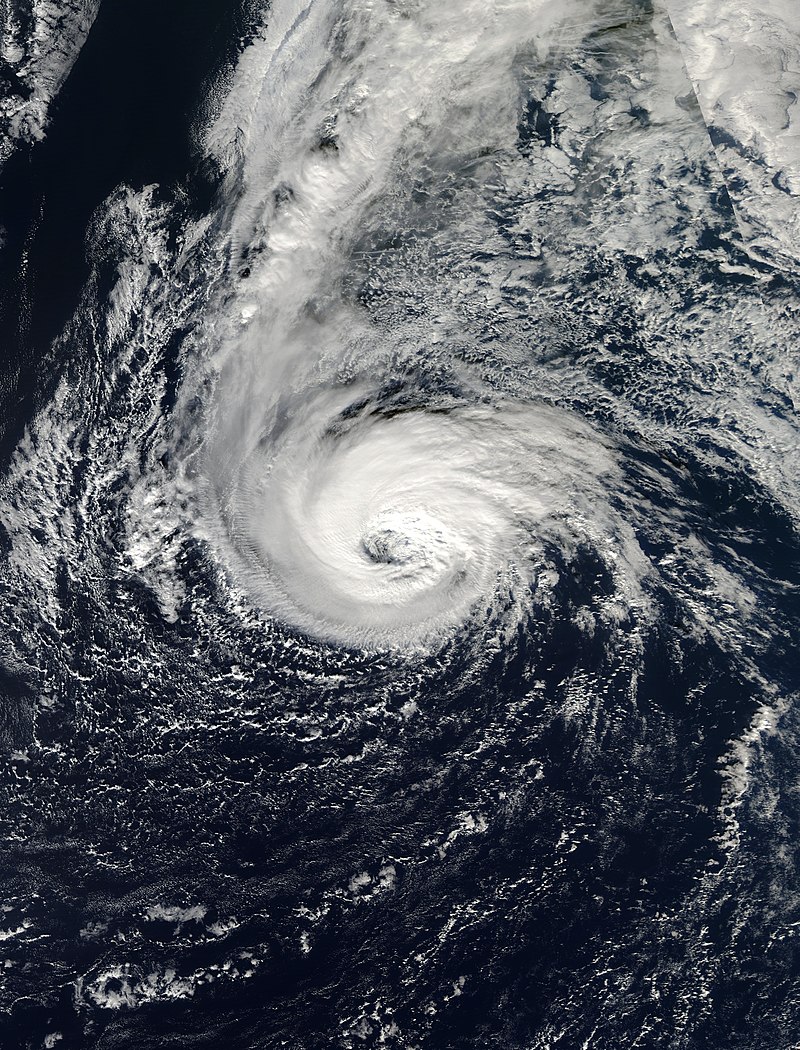Hurricane Epsilon, the twenty-seventh named tropical or subtropical storm of the unprecedented 2005 Atlantic hurricane season, stands out as a notable event due to its remarkable persistence and defiance of initial forecasts. Originating from a cold front beneath an upper-level low, Epsilon formed on November 29, 2005, approximately 915 miles (1,470 kilometers) east of Bermuda. This research article examines the unique characteristics and impacts of Hurricane Epsilon, including its unexpected path, the extension of the 2005 hurricane season, and its status as the longest-lasting December hurricane on record. Additionally, we explore the measures that can be taken to enhance preparedness and protection when faced with the threat of a similar hurricane in the future.
Introduction: The 2005 Atlantic hurricane season was unprecedented in its intensity and number of storms. Hurricane Epsilon, as the final of 15 hurricanes, held its own by defying initial predictions and exhibiting exceptional persistence. This article presents a comprehensive analysis of Hurricane Epsilon, highlighting its formation, intensification, and eventual dissipation. Furthermore, we explore the impacts of this storm, focusing on the areas it affected, the damage incurred, and the subsequent recovery efforts. Lastly, we provide recommendations to enhance preparedness and protection when faced with the potential landfall of a hurricane similar to Epsilon.
Formation and Intensification: On November 29, 2005, Hurricane Epsilon began its journey approximately 915 miles (1,470 kilometers) east of Bermuda. Initially, the National Hurricane Center (NHC) forecasted its transition into an extratropical cyclone within five days due to unfavorable conditions for significant intensification. However, Epsilon defied these expectations, first by executing an unexpected loop to the southwest and later by maintaining its strength despite cold waters and strong wind shear.
Extended Duration and Anomalous Characteristics: Epsilon’s persistence into December extended the 2005 hurricane season beyond its defined end date of November 30. On December 1, influenced by an approaching trough, the storm began a northeast motion and quickly attained hurricane status the following day. Notably, Epsilon developed characteristics of an annular hurricane, boasting a circular eye, a ring of intense convection, and minimal intensity fluctuations. On December 5, it reached its peak winds of 85 mph (140 km/h), and the next day it changed direction, moving south and southwest. Late on December 7, Epsilon weakened below hurricane status for the first time in five days, setting a record as the longest-lasting December hurricane. Subsequently, increased wind shear caused rapid deterioration, and Epsilon could no longer be classified as a tropical cyclone by late December 8. The remnants of the storm dissipated the following day.
Impacts and Aftermath: Fortunately, Hurricane Epsilon remained well out at sea, posing no direct threat to land. Consequently, no warnings or watches were issued, and no areas experienced its damaging effects. There were no reports of tropical storm force winds from Epsilon, and consequently, no casualties or damages occurred. The storm’s dissipation was a relief to the affected regions, sparing them from the need for extensive cleanup and rebuilding efforts.
Enhancing Preparedness and Protection: While Hurricane Epsilon did not cause significant damage or loss of life, it serves as a reminder that preparedness is crucial when facing the threat of a hurricane. To enhance protection in the event of a similar storm, residents and authorities should adhere to the following recommendations:
- Stay informed: Monitor weather updates and advisories from reliable sources such as the National Hurricane Center or local meteorological agencies.
- Have an emergency plan: Create a comprehensive plan that includes evacuation routes, designated shelters, and communication strategies for family members or employees.
- Prepare an emergency kit: Stock up on essential supplies, including non-perishable food, water, batteries, flashlights, and medical supplies.
- Secure your property: Identify vulnerable areas and take measures to reinforce windows, doors, roofs, and outdoor structures. Trim trees and remove any potential debris that could become projectiles during high winds.
- Review insurance coverage: Ensure that your property is adequately insured against potential damages caused by hurricanes or tropical storms.
Interesting Fact: As a direct result of the 2005 Hurricane Epsilon, meteorological research and modeling efforts have been intensified to improve hurricane prediction and track forecasting. The storm’s unique behavior, including its persistence and defiance of initial forecasts, has provided valuable insights for meteorologists and highlighted the need for ongoing advancements in hurricane research.
Concusion: Hurricane Epsilon’s formation, duration, and unexpected path make it a significant case study within the context of the record-breaking 2005 Atlantic hurricane season. While Epsilon did not result in any significant damages or fatalities, it serves as a reminder of the importance of preparedness and timely response when facing the potential landfall of a hurricane. By staying informed, having an emergency plan, preparing an emergency kit, securing property, and reviewing insurance coverage, individuals and communities can improve their resilience and protect themselves from the impacts of future hurricanes. The lessons learned from Hurricane Epsilon continue to drive advancements in meteorological research, contributing to more accurate hurricane forecasting and enhanced public safety.




Leave a Reply